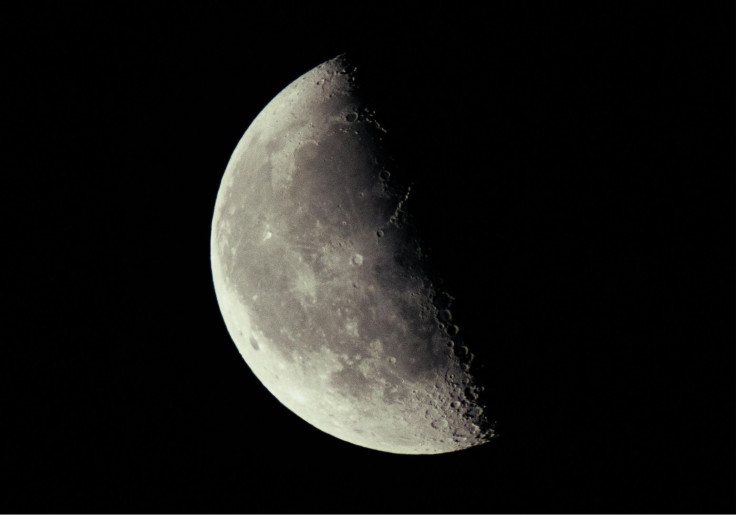NASA Says Earth Has a New 'Quasi-Moon' Shadowing Our Orbit Until 2083

KEY POINTS
- 2025 PN7 is a small asteroid that has been traveling alongside Earth for roughly six decades.
- A quasi-moon is an object that orbits the Sun but moves almost exactly in sync with Earth's orbit.
- Researchers say the asteroid poses no threat to Earth and offers a unique opportunity to study near-Earth object dynamics.
Say hello to 2025 PN7, a newly discovered space rock that's quietly been keeping Earth company — and may continue to do so until 2083.
While it's not an official moon, astronomers have confirmed that this mini asteroid behaves like a 'quasi-moon', orbiting the Sun in near-perfect sync with our planet. From our vantage point, it looks like it's shadowing Earth, trailing us through space like a cosmic tagalong.
The discovery was first made by the University of Hawaii and later confirmed by researchers at the Complutense University of Madrid, who published their findings in September. According to Carlos de la Fuente Marcos, lead astronomer on the study, the rock has likely been travelling alongside us for decades.
'This little rock has probably been tagging along for around 60 years,' he said. 'It's only now that we've had the sensitivity to detect it properly.'
Though it measures just a few dozen feet across, 2025 PN7 is a fascinating example of how many secrets our solar system still holds — even in Earth's own backyard.
What Makes a Quasi-Moon?
Unlike our Moon, which is gravitationally bound to Earth and completes an orbit around us every 27 days, 2025 PN7 orbits the Sun. However, because its orbital period, eccentricity and inclination closely match Earth's, it effectively remains alongside our planet, completing a lap in roughly the same time.
Astronomers estimate the asteroid is between 18 and 36 metres in diameter — roughly the size of a small building. Its closest approach to Earth can bring it within about 4 million kilometres, which pales in comparison to our Moon's average distance of 384,000 kilometres. At its farthest, though, it may swing out to 17 million kilometres. The sheer faintness and small size of 2025 PN7 meant it remained undetected until now.
'It is small, faint and surprising in how long it has remained hidden,' de la Fuente Marcos said in the research notes. 'Its visibility windows from Earth were limited, so it's not shocking it escaped notice.'
Discovered & Classified
The object was first glimpsed on 2 August 2025 by the Pan‑STARRS1 Observatory on Haleakala, Hawai'i. Archival images reveal the asteroid had been shadowing Earth for decades. The discovery was formally published in September in the Research Notes of the American Astronomical Society. Amateur astronomer Adrien Coffinet first flagged the object's unusual orbit after analysing the data and posting his findings in late August.
The asteroid belongs to the so-called Arjuna class, a small group of near-Earth objects that share Earth-like orbits — low tilt, low eccentricity and a semi-major axis very close to 1 AU (Earth's distance from the Sun). These asteroids are sometimes dubbed a "secondary asteroid belt" due to their unique orbital paths.
Staying While They Stay
Models suggest 2025 PN7 has been in a stable quasi-satellite orbit since the mid-1950s, making it a permanent shadow-companion of sorts — at least for now.
Scientists expect it to remain in this configuration until roughly 2083, after which gravitational interactions with other bodies will likely cause it to drift away or shift into a different orbital pattern.
Despite the headline potential of a 'second moon,' experts are careful to stress that 2025 PN7 poses no threat to Earth. It never comes close enough to impact our planet, and its small size means it would burn up or fragment well before reaching the surface. What makes it scientifically valuable is the opportunity it offers to study how small bodies interact with Earth-like orbits and how they might be future mission targets.
Why It Matters
The discovery of 2025 PN7 adds to a known group of only eight quasi-moons of Earth. Each one offers researchers insight into orbital dynamics, the evolution of near-Earth objects and the interplay between solar and terrestrial gravity fields. Because 2025 PN7's orbit is so Earth-like, it becomes a potential target for space missions, which would require less fuel and time than many other objects.
'In a way, this is a natural laboratory for studying how small asteroids hitch-a-ride with Earth,' said de la Fuente Marcos. 'It helps us grasp how the solar system tinkers with objects in our vicinity — and how Earth's gravity plays choreographer.'
Looking Ahead
For the next six decades, Earth will share space with this silent companion. While it won't influence tides, night skies or human affairs, 2025 PN7 offers a unique chance to observe a cosmic dance few knew was happening.
From our vantage point, it may appear to loop around us, but in reality it is orbiting the Sun, almost effortlessly keeping pace with our home planet.
As telescopes become more powerful and surveys more sensitive, astronomers believe more quasi-moons may be hiding in plain sight. But for now, 2025 PN7 holds the distinction of being our most recent, smallest and most stealthy space neighbour — for the next 60 years at least.
© Copyright IBTimes 2025. All rights reserved.





















